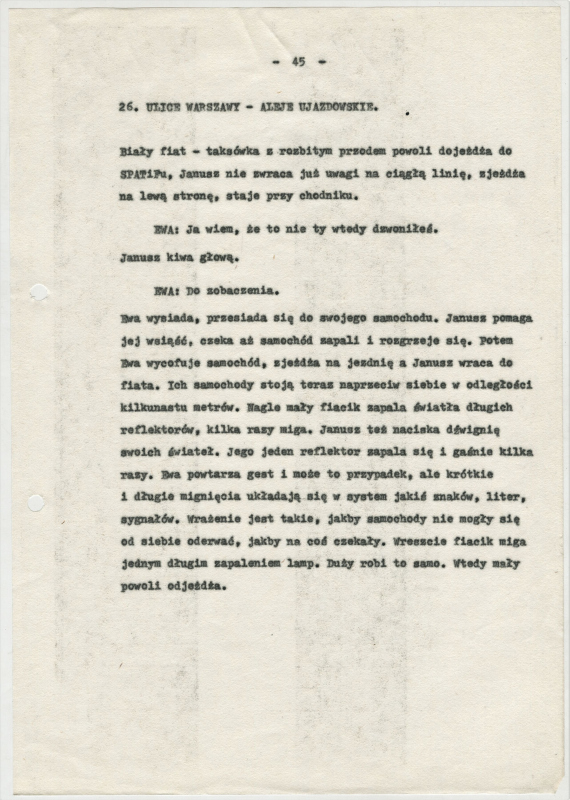Plac Trzech Krzyży (Three Cross Square)
Plac Trzech Krzyży (Three Cross Square) is located on the Royal Route in central Warsaw. Its current outline dates back to the 18th century. In 1725 two pillars topped with gilded crosses were erected in the square. To commemorate the completion of the paving of Warsaw’s streets, a statue of St. John Nepomucene holding the square’s third cross was unveiled near the pillars in 1756.
Decalogue Three
Decalogue Three features a recurring high-angle shot of part of the Warsaw square known as Plac Trzech Krzyży, viewed through the capital of the Corinthian column supporting the architrave of the Church of St. Alexander. This classical architectural theme emphasizes the universal dimension of the story featured in the episode, a narrative that resurfaces time and again over the ages. It is the tale of Ewa, who tries to seduce Janusz, tempting him to betray his wife, lie (to the police and his spouse), and, in a sense, commit suicide (by pressing him to drive recklessly), all while depriving his family of the presence of their father and husband on Christmas night. The high-angle view shows a triangular section of the city square, a pregnant detail, considering the context: the film is about a love triangle. We see two cars parked in the shot: Janusz’s white Polish Fiat 125, and Ewa’s red 126p. The car belonging to the third man, Edward, Ewa’s ex-husband, makes no appearance, like Edward himself, even though finding him is the ostensible purpose of the former lovers’ nighttime voyage through the city. We catch only a glimpse of him in a photo, surrounded by his new family, at the end of the film, when Ewa admits to lying about Edward’s disappearance to lure Janusz out of his home. The man in the picture is in fact the cinematographer Edward Kłosiński, who shot Kieślowski’s Decalogue Two and Three Colours: White.
